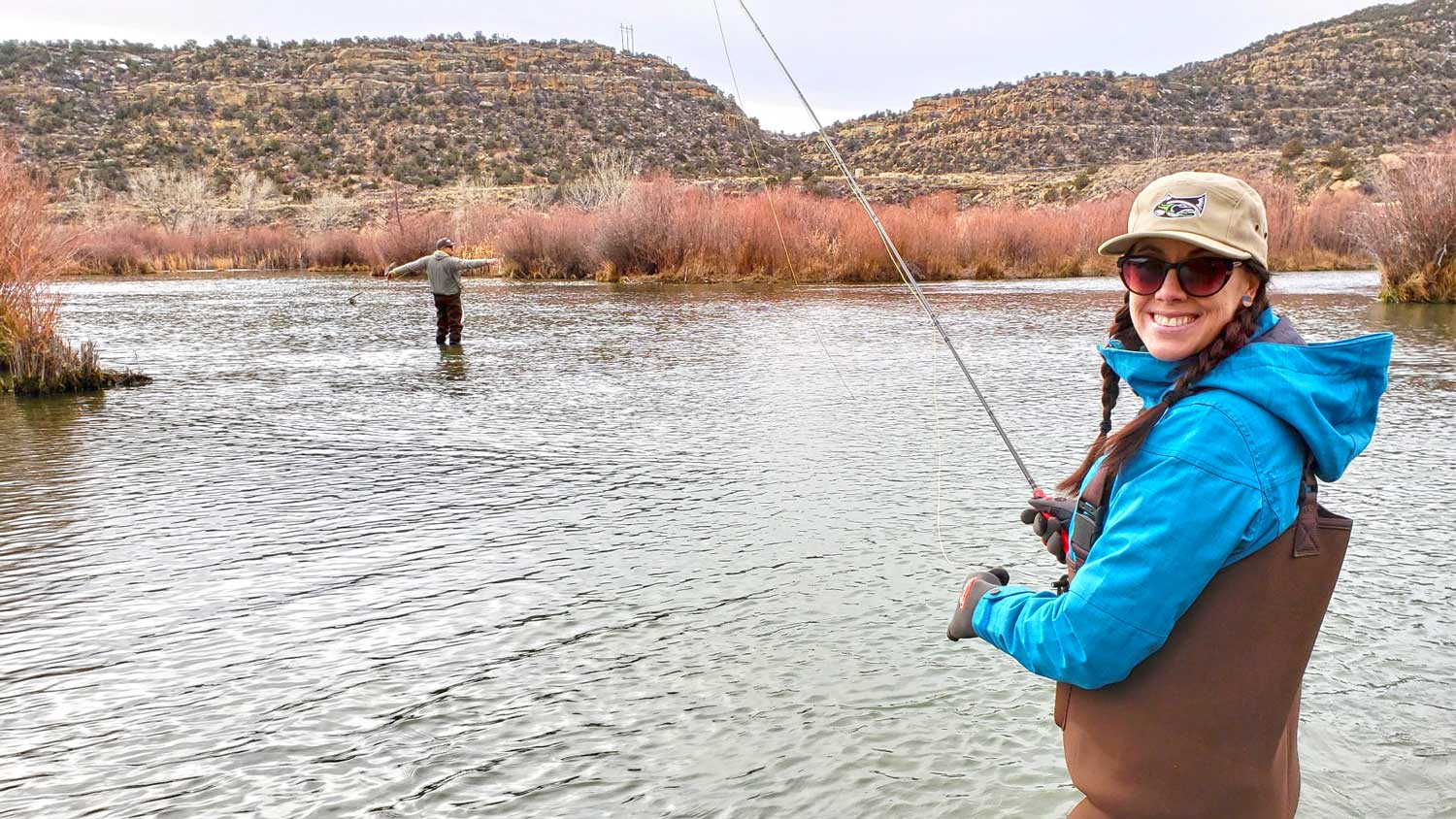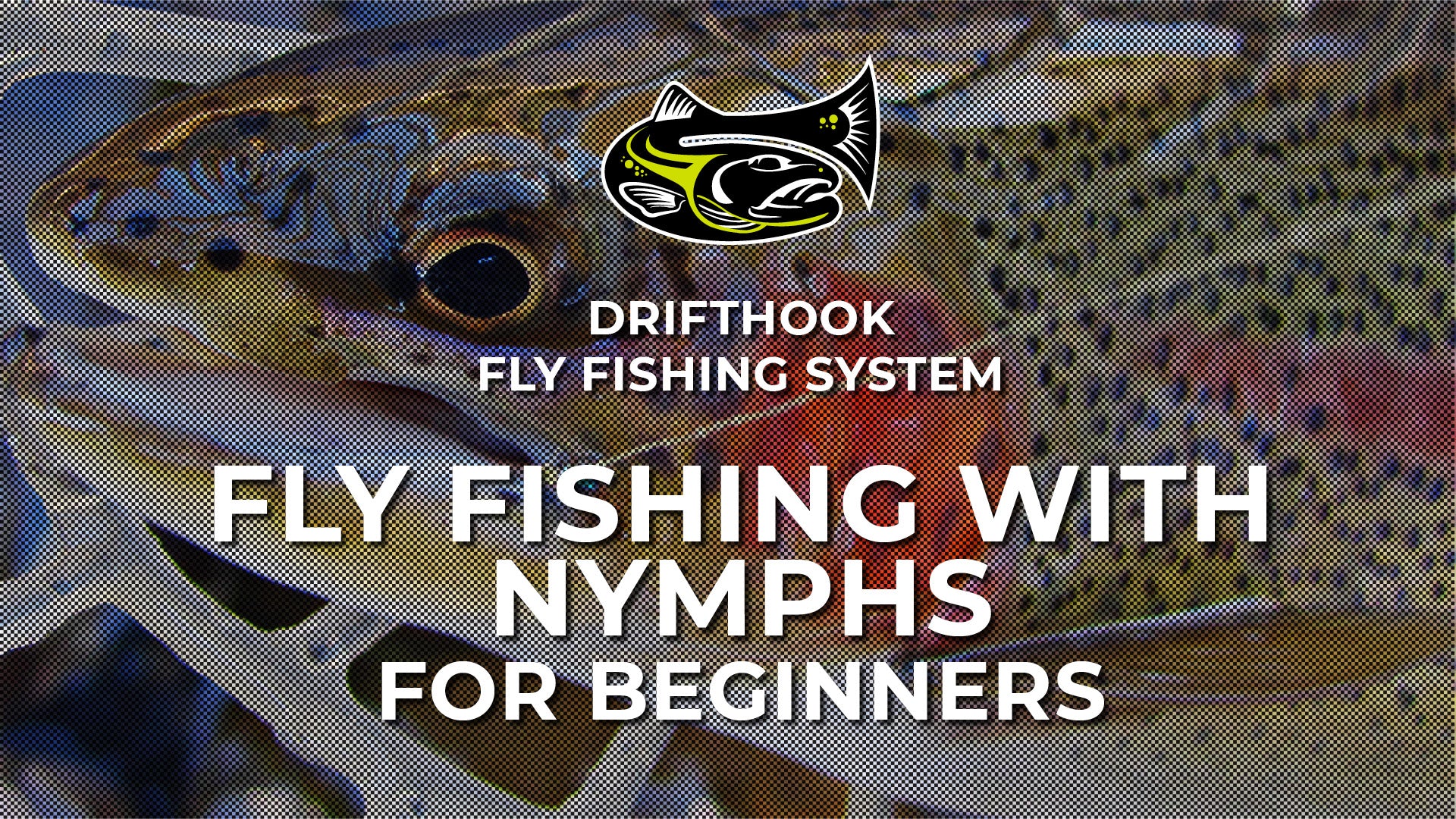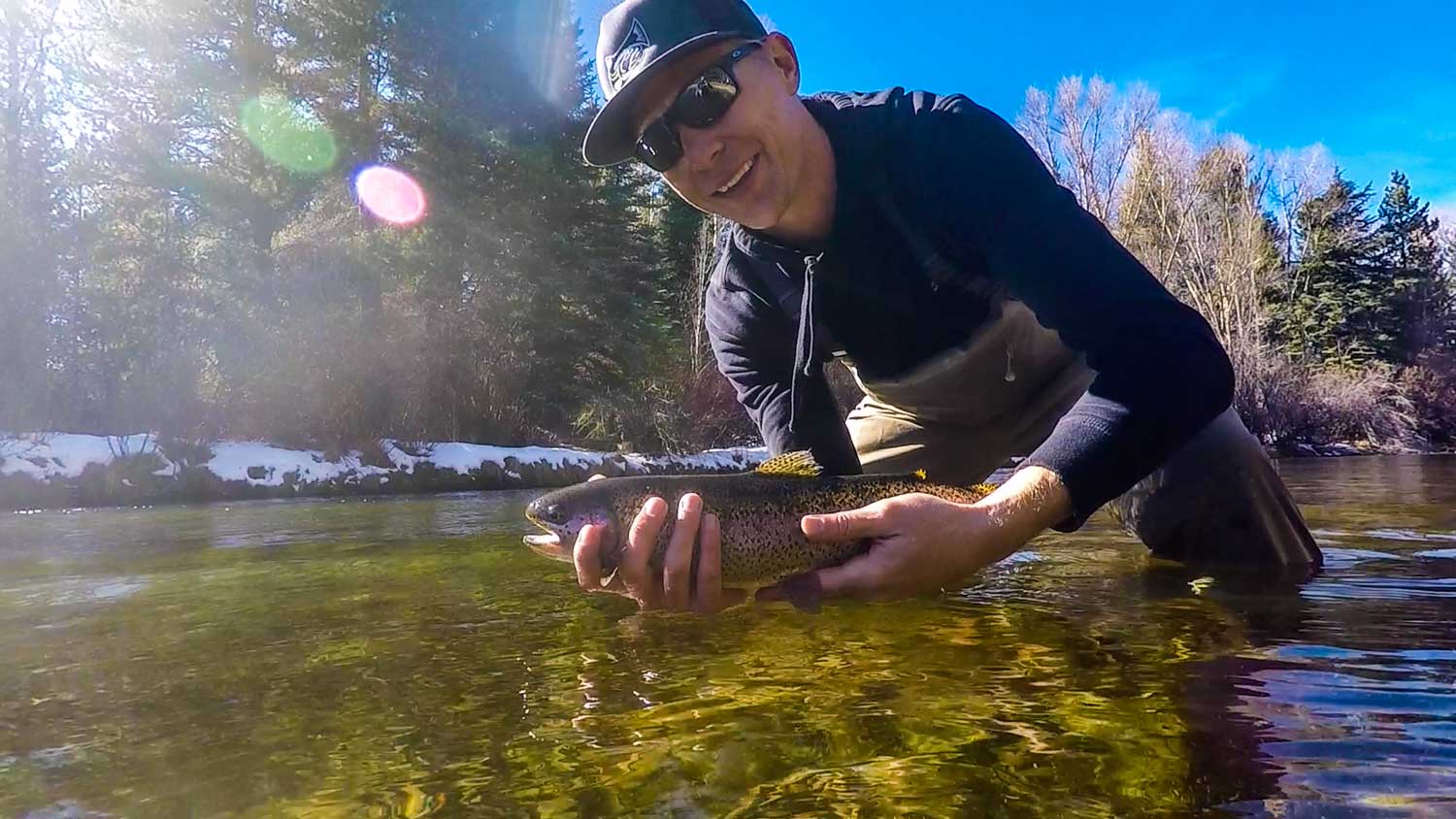
As you develop your skills and learn how to use fly fishing gear, understanding how a tippet works and when to use one can transform your experience.
Attaching the fly to your tippet helps to mimic the realistic movement of the insect and nymph behaviors, essential in fly fishing. But, while a standard part of fly fishing gear, the tippet is not always needed to have an enjoyable fly fishing experience. Knowing when to keep or ditch it makes a huge difference.
Fly fishing relies on the standard combination of three elements to lure the fish, namely the leader, tippet, and fly.
Prolonging the leader's length and lifestyle, the tippet is an invisible line that holds the fly and helps it moves and float naturally.
But using a tippet can also hinder your fly fishing experience in certain situations, which is why it’s essential to understand when to use it and when not.

The Tippet is Part of Your Fly Fishing Gear
For enthusiastic hobbyists who have learned how to fly fish with an instructor, the tippet is one of the first elements you handle when you learn to tie fly fishing knots. However, anglers who have learned through observation or trial and error have come to question the role of the tippet in their fly fishing technique. Therefore, a brief reminder of its function and importance is necessary.
The leader connects you to the water
Ultimately, fly fishing is all about convincing the fish that the fly they see is safe to eat. Therefore, less conspicuous fly fishing gear is more likely to be more productive. Indeed, when you consider your fly line, invisible is the last thing that comes to mind.
You can't attach your fly directly to the line because fish would see it. That's why you need a leader to build an almost transparent connection to the line. The leader typically has a large diameter end attached to the line and a small diameter tip pointing at the fly.
 Commonly at a length of 7.5 to 9 feet, the leader is tapered monofilament nylon to give you greater control over your fly. You can cast with leaders as long as 24 or 25 feet in specific presentations and environments.
Commonly at a length of 7.5 to 9 feet, the leader is tapered monofilament nylon to give you greater control over your fly. You can cast with leaders as long as 24 or 25 feet in specific presentations and environments.
When you roll your cast, the thicker end of the leader creates a movement that travels through the leader line and generates a whip at the thinner end. That is the wave and loop motions you learn to master as you go through your casting technique.
The taper helps to build the rolling motion. But it also means that the thin end of the leader – the smallest diameter section of the leader that points to the fly – is only 20 to 30 inches. This gives anglers only a short range of transparent line to lure the fish.
It is worth mentioning that you can also find a straight monofilament line used instead of a leader. This is commonly used in Euro Style fly fishing where the leader constructions used can be as long as 25 to 30ft. Nevertheless, these leader setups typically still taper down using smaller diameter tippet materials until they reach their end fly.
After the Leader, There is the Tippet
The tippet acts as a supportive bridge between the tip of the leader and the fly, providing an utterly invisible line that fish won’t notice. It can be built out of monofilament material or fluorocarbon. But unlike the leader, the tippet isn’t tapered. In other words, the tippet is lighter than the leader.
In fly fishing terms, one of the first things to master is how to tie fly fishing knots to secure your fly to the tippet. It can be a tricky skill to learn, as the tippet diameter is equal or smaller than the thinner end of the leader.

From the fish's perspective, it's the section that is a virtually invisible line attached to the fly, which makes a big difference compared to the 30 inches of thin line at the tip of the leader. Depending on the breaking strain, your tippet can be made of nylon monofilament, fluorocarbon, or copolymer.
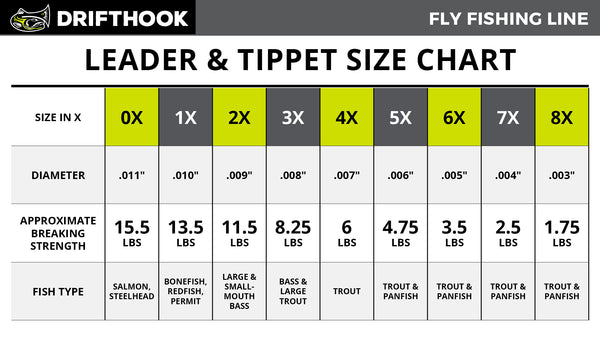
Combined with the leader, you can get on average up to 13 feet of line length to create a convincing lure for fish. While longer isn’t always better, create sufficient distance between anglers and flies gives you better chances of making a successful catch.
Then the Fly is Attached to the Tippet
At the end of the tippet, the angler needs to knot the fly in place. If you need a brief reminder of the essential fishing knots and when to use them, be sure to watch our knot videos about the different types of knots how they help you to tie your fly fishing gear together.
Your tippet size and weight will be defined by the fly you use. For micro fly patterns, such as size 28 or 24, you may prefer a lighter tippet with a lower breaking strain, while a large size fly requires a higher breaking strain tippet. The breaking strain refers to the tension the tippet can sustain before breaking.
Even if you are using a large fly to attract smaller fish, it’s good to know how to choose the best tippet for your situation. Light tippets don’t work well with big flies as they tend to break easier when casting heavier weight. It’s best to scale up the diameter to suit your fly.

Additionally, wind conditions can also affect the tippet behavior and force you to change for a large diameter to give the fly more resistance and avoid uncontrolled motions in or on the water.
The Challenges of Attaching Your Fly to the Leader
While most fly fishing anglers will prefer to attach their fly to the tippet, this isn't the only possible solution. You can choose to knot your fly to the leader, working with a short invisibly fly fishing line to lure fish. The leader-fly knot has its advantage, as we will see later, but they come at a high cost. Indeed, skipping the use of the tippet altogether can affect your fly fishing experience and results. Here is what you need to consider if you want to carry on without a tippet:
The Leader’s Tip Wears Off
The thin tip of your leader — aka the part where you would attach the fly if you didn’t use a tippet – is at best only 30-inch long. When you are out of a fly fishing day, you’re likely going to cut the line each time you need to knot and unknot a fly. Not only does it ensure you’re not wasting precious time, but it’s also the best way to control the motion during your cast. You want to avoid unnecessary bends and resistance through the thin end of the leader when you roll, which can only work if you cut worn out bits as you change the fly.

Additionally, the longer you use the fly on the same leader, the more likely it is for the thin end to be exposed to a variety of elements, such as algae, catch tension, or even saltwater if you go fly fishing offshore.
When the thinner end wears off, there is no other solution than to change your tapered leader. That's precisely why using a tippet is essential when you're learning how to fly fish. It's the best way of preserving your gear for longer and ensuring you can learn at your own pace without damaging your equipment. As the leader gets shorter, not only can the line become more apparent for fish, but it makes your fly fishing technique more challenging to maintain. If you are wondering how to choose the right leader length for your day out fishing, this article on the blog should prove helpful.
You Can't Reach Everywhere
The tippet doesn't only protect the leader; it adds more length to your line. When you fly fishing in a large open area, such as a broad stream, a lake, or even in seawater, the extra length provided by the tippet can help you to cover more distance and reach further.

For beginners who are still learning how to cast a fly, working with a long line can feel daunting. However, for delicate fly presentations, adding a tippet is precisely what you need to cast and catch. When you think of catching MONSTER trout fish, for instance, the tippet helps your cast motion and also means you can multiply flies. Whether you are going to stream, lake, or deep pools, using more than one flies can be useful to catch as many fish and as deep or far as you can.

On the other end, when you skip the tippet altogether, your range of action is limited. While it can be the right decision in a specific fly fishing scenarios such as dipping your nymph underwater, it reduces your cast and retrieves motion dramatically.
Additionally, for deep nymph fly fishing environments, the tippet can help to measure depth by multiplying flies and using them as depth monitors. Even when you’re only dipping your flies and letting them sink, the tippet can create a solid ensemble.

Its Harder to Create Natural Nymph Movements
You can excel in the art of luring fish if your flies don’t behave as naturally and realistically as possible. The tippet creates the right level of tension for your flies, where attaching them directly to the leader would offer visible signs of resistance.
As explained in a previous article on how to choose your leader and tippet depending on your fly fishing needs (see above for link), you can add more weight to the knot that attaches the leader to the tippet, which is a practical addition for nymph fly fishing as it ensures the fly can sink quickly. When you can’t use a weighted fly for practical reasons, the tippet is the safest and easiest way to introduce a sinking weight into the presentation.
Just as the tippet conveys a motion to the fly, it also helps you to notice a light catch by passing on the tension to the rest of your fishing line. When you attach the fly directly to the leader, you may be working with a high poundage line – aka breaking strength. As a result, the light touch trout can grab the bait and remain unnoticed in dirty water.

Why Some People Choose to Skip the Tippet
While the tippet is a must-have in most situations, fly fishing enthusiasts for are experienced in the following setup: Line - Mono - Fly

Indeed, it is fair to say that there are some situations in which using a tippet could prove handicapping or frustrating. If you are considering monster trout fly fishing, you may want to understand why ditching the tippet can feel liberating at times.
To Maximize Their Fly Fishing Time
There is no fly fishing without fly fishing knots. If you are not comfortable with knots and how to tie them, it’s easy to understand why you would prefer to simplify your setup. When you use a tippet, you need to add a knot to connect to the leader, as well as as many knots as you want to add flies. Changing flies can become a demanding task, especially if you need to adjust the tippet to a bigger or smaller fly. For info, you can learn here how to tie effective fly knots if you need to refresh your beginner’s skills.
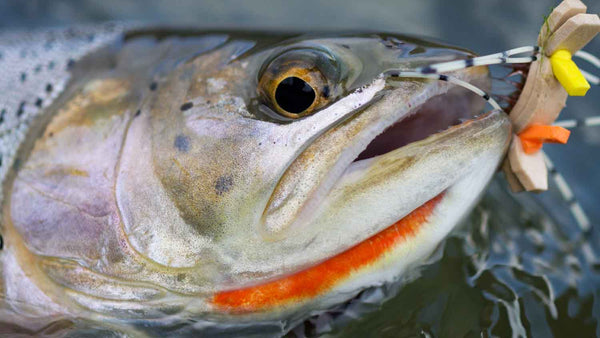
If knots are not your forte, but you still want to enjoy casting and catching, working without a tippet may be the right solution for you at the time being. It doesn't mean it's always going to be the right thing, especially as you are going to wear off your leader at high speed, but sometimes simplicity is the best answer.
Not Enough Room for Casting
Typically, your casting method needs to take obstacles into account. But sometimes, there isn’t enough room to maneuver safely around each obstacle with your line. If you can’t find a safe alternative, it can be easier to attach your fly to the leader directly.
When you are sinking flies in shallow water, the tippet can become a nuisance rather than a support. Fly fishing in a narrow and shallow area can require a more straightforward presentation. Ultimately, it is up to you to try what works best in each location, but if you are ready to ditch the tippet for maneuverability in a tight environment, you can gain an advantage against the fish!
Admittedly, it’s important to mention that when you resort to removing the tippet too frequently, it’s probably a sign you need to improve your casting methods. These 10 Fly Fishing Casting Tips could help you to adjust mistakes and progress.

The X Rating is Confusing
You’ve probably seen the chart in the past, but it doesn’t mean you understand it. The breaking strain of your leader and tippet is affected by the type of fish you want to catch. For instance, it’s fair to say that you will need to consider high strain levels for big fish. But, the type of fly you use, the fish habitat, and the presentation of your flies also influence the breaking strength.

When you are not sure what to choose for each scenario, it is sometimes best to let go off your tippet altogether and test the waters with a leader only. Here’s the issue with this approach: You are at risk of breaking your leader. But, it’s also the best learning technique to gain a better understanding of what X size you need.
To Familiarize Themselves with the Gear
Nobody expects beginners to get the hang of their fly fishing line overnight. When you are still at the beginning of your fly fishing adventure, it’s perfectly okay to leave out some of your fly fishing gear.
The truth is that handling a rod and several feet of fishing line is a skill that does not come overnight. Therefore, taking it slowly until you feel more confident in your casting techniques and your knots is the best thing you can do. Ideally, you should be starting with the tippet, but getting to know how everything feels and reacts is all about testing. Trying fly fishing with and without a tippet can help you to understand not only how a tippet works but also why it works better in some presentations and less in others.

To Experiment with New Habitats
Last but not least, not all fly fishing environments require a tippet. While there are some distinct situations, such as shallow water setups, it's worth keeping your scientific curiosity alert when discovering new locations. Indeed, you need to be willing to try new approaches when your usual fly fishing method doesn't work!
This brief overview of how the tippet affects your fly fishing experience and why you may not always need it can help you to approach locations and setups with an open mind. Admittedly, improving your understanding of breaking strain levels, casting techniques, and fly presentation can also influence your choice when it comes to the tippet. Nevertheless, it's good to know that, while the tippet makes you more likely to make a big catch, some enthusiastic anglers have had great results without using one.

About the Author
Matthew Bernhardt, a third-generation Coloradan, grew up at the forefront of the state’s fly-fishing revolution, enjoying time on the water, side by side with experienced guides and lifelong anglers.
By combining his passion for fly-fishing with input from other experienced fly-fishers and guides and his fine arts degree from Colorado State University, Matthew spent five years carefully developing the Drifthook Fly Fishing System, built to help every angler catch more trout.
When he’s not spending time with his wonderful family, you’ll find him out on the water catching MONSTER trout, and he anxiously looks forward to the day when his kids are old enough to join him there.

